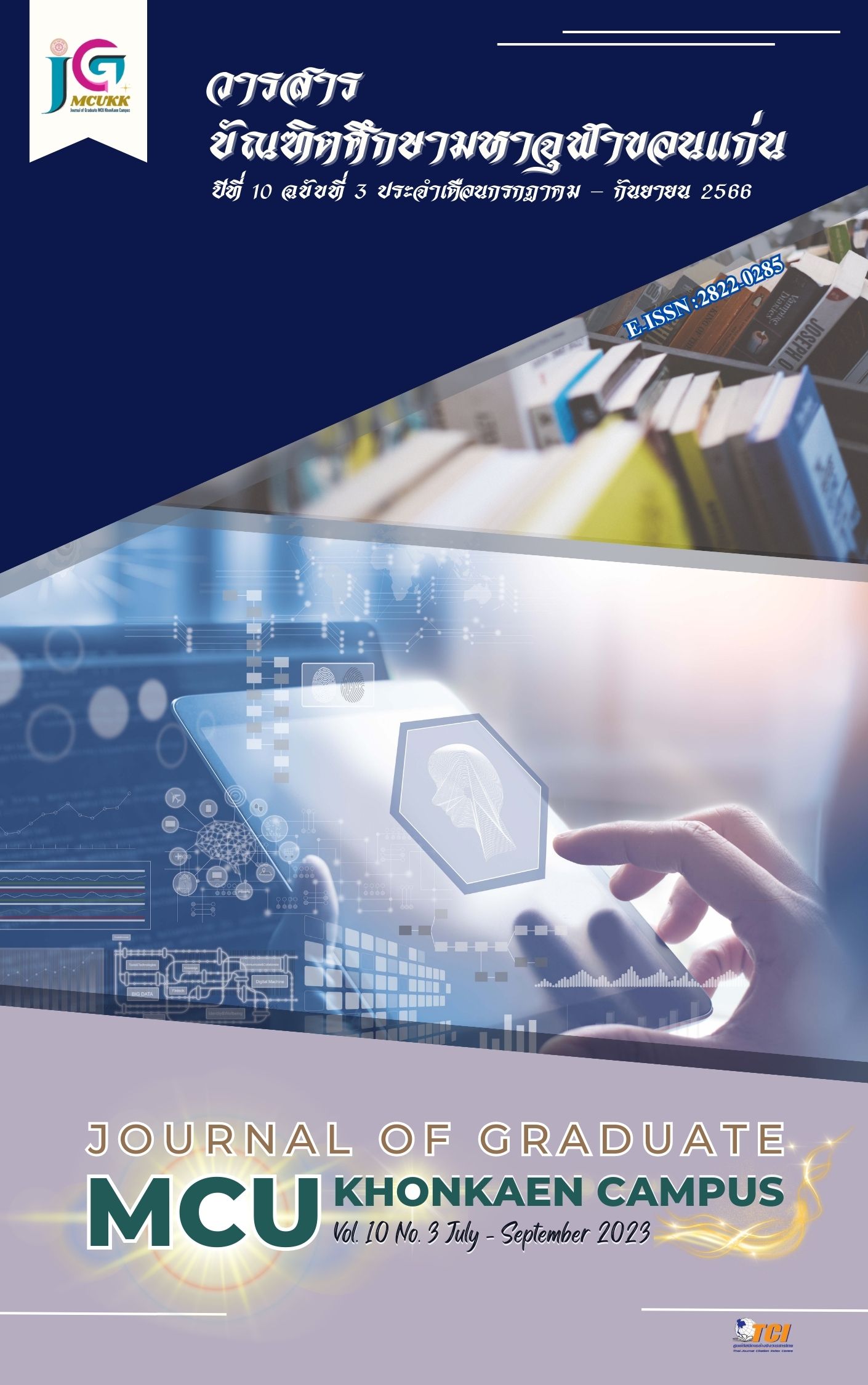การบริหารตามหลักธรรมทศพิธราชธรรมของผู้บริหารสถานศึกษา สังกัดสำนักงานเขตพื้นที่การศึกษามัธยมศึกษากาญจนบุรี
Main Article Content
บทคัดย่อ
ผลการวิจัยพบว่า
1) การบริหารตามหลักทศพิธราชธรรมของผู้บริหารสถานศึกษาสังกัดสำนักงานเขตพื้นที่การศึกษามัธยมศึกษากาญจนบุรี ในภาพรวมและรายด้านอยู่ในระดับมาก
2) การเปรียบเทียบการบริหารตามหลักทศพิธราชธรรมของผู้บริหารสถานศึกษา สังกัดสำนักงานเขตพื้นที่การศึกษามัธยมศึกษากาญจนบุรี จำแนกตามขนาดสถานศึกษาในภาพรวม และรายด้านทุกด้านไม่มีความแตกต่างกัน
Article Details

อนุญาตภายใต้เงื่อนไข Creative Commons Attribution-NonCommercial-NoDerivatives 4.0 International License.
เอกสารอ้างอิง
เกษม วัฒนชัย. (2559). คุณครูที่รัก บุญแล้วที่เกิดมาเป็นครู (พิมพ์ครั้งที่ 7). กรุงเทพฯ: พัฒนา.
พระมหาประภาส โชติเมธี. (2563). การบูรณาการหลักทศพิธราชธรรมเพื่อการบริหารงานของผู้บริหารองค์การบริหารส่วนตําบลโบสถ์ อําเภอพิมาย จังหวัดนครราชสีมา. นครราชสีมา: มหาวิทยาลัยมหาจุฬาลงกรณราชวิทยาลัย.
เพชรธนินทร์ การะวิโก. (2558). ทศพิธราชธรรมกับผู้บริหารสถานศึกษาที่ดีในศตวรรษที่ 21. นครราชสีมา: มหาวิทยาลัยมหาจุฬาลงกรณราชวิทยาลัย.
มนูญชัย ชาวแกลง. (2563). ความสัมพันธ์ระหว่างการประยุกต์ใช้หลักธรรมทศพิธราชธรรมของผู้บริหาร สถานศึกษากับการมีส่วนร่วมของครู สังกัดสํานักงานเขตพื้นที่การศึกษาประถมศึกษาจันทบุรี
เขต 1. จันทบุรี: มหาวิทยาลัยราชภัฏรำไพพรรณี.
เมธี นาอุดม. (2563). ศึกษาเรื่องการปฏิบัติหน้าที่ตามหลักทศพิธราชธรรมของผู้บริหารโรงเรียนสังกัด
สํานักงานเขตพื้นที่การศึกษาประถมศึกษาในจังหวัดนครพนม. สกลนคร: มหาวิทยาลัยราชภัฏ
สกลนคร.
สำนักงานคณะกรรมการการพัฒนาเศรษฐกิจและสังคมแห่งชาติ. (2560). แผนพัฒนาเศรษฐกิจและสังคมแห่งชาติฉบับที่ 12 พ.ศ. 2560 - 2564. กรุงเทพฯ: สำนักนายกรัฐมนตรี.
สำนักงานคณะกรรมการข้าราชการครูและบุคลากรทางการศึกษา. (2550). รายงานประจำปีการบริหารงานคณะกรรมการข้าราชการครูและบุคลากรทางการศึกษา ประจำปี พ.ศ. 2550. กรุงเทพฯ: สำนักงานคณะกรรมการข้าราชการครูและบุคลากรทางการศึกษา.
อภิรักษ์ สุจริตจันทร. (2559). ความสัมพันธ์ระหว่างภาวะผู้นำตามหลักทศพิธราชธรรมภาวะผู้ตามที่มีความกล้าหาญและพฤติกรรมการเป็นสมาชิกที่ดีขององค์กร. ปทุมธานี: มหาวิทยาลัยเทคโนโลยีราชมงคลธัญบุรี.
Krejcie, R. V., & Morgan, D. W. (1970). Determining sample size for research activities. Educational and Psychological Measurement, 30(3), 607-610.

